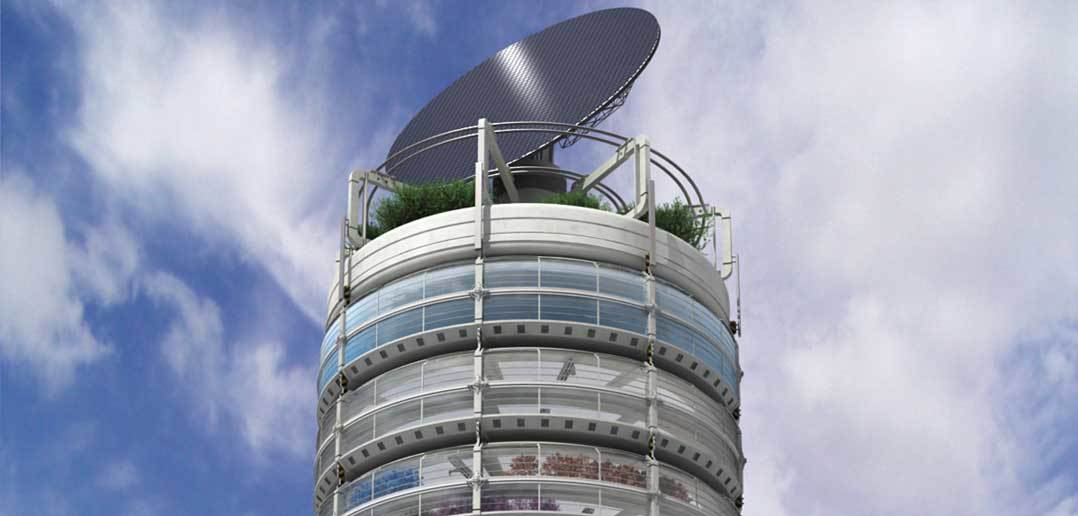The future of the planet’s agriculture doesn’t belong to the soil and the fields—it is destined for the skies. A new type of farming has emerged that challenges the notion of tradition farming. It’s called vertical farming, a fusion of architecture and agriculture with a single goal in mind: to build towering skyscrapers used for growing fresh foods.
A single vertical farm would house several levels of agricultural growth, one right on top of the other. Fruits and vegetables would grow in climate-controlled greenhouses, producing more food than traditional farming by at least 200 percent. Vertical farming is still in its infancy, but it’s a scientific model that carries with it a long list of solutions to many of the world’s current problems, chief among them climate change and pesticide contamination in food production.
GROWTH OF AN IDEA
The idea of vertical farming sprang from the minds of Dickson Despommier, a professor of environmental health science, and his graduate students during a 1999 medical ecology class at Columbia University in New York City. Despommier challenged his students to feed 50,000 Manhattan residents using only 13 acres worth of rooftop gardens. It wouldn’t work: only two percent of the quota would be fed.
That is, at least, until Despommier thought about using whole buildings for farming, rather that just the top. The concept started to gain traction from that point forward, and Despommier began working with a series of designers to create models that reflected the fullest potential of a vertical farm building.
Chief among these designers was Chris Jacobs, co-founder and creative director of United Future, a marketing and design company based in Los Angeles, California. Ever since he began his work on vertical farming Jacobs’ designs have been well-received in the media worldwide, appearing in several publications, including Plenty, U.S. News and World Report, and Scientific American.
FARMING THE FUTURE SKYWARD
An agricultural shift towards vertical farming would have a twofold affect: controlled crop production and reforestation.
Food production would fall under human management completely, located within controlled indoor environments; this would prevent crop failure, eliminate pesticide and fertilizer use, allow for the direct distribution of harvests, permit year-round production, and eliminate the usage of fossil fuels in harvesting and transportation. And with farmlands no longer needed for crop production, all of it could be reforested, restoring untold amounts of forestry to temperate and tropical areas.
“The re-growth of hardwood forests could play a significant role in carbon sequestration and may help reverse the current trends in global climate change,” Despommier wrote in an essay on vertical farming.
Any given vertical farm would house several levels of production, from livestock to fruits and vegetables. Hydroponics, the system of growing plant-life in water rich with mineral nutrients without the use of soil, would play a key role in the vertical farming process. Jacobs is a personal advocate of hydroponics, pointing out that the United States alone already depends greatly on the procedure. And aside from the key benefits of reforestation and fertilizer/pesticide elimination, the value of production is vastly superior.
“There is a drastic increase of the amount of food per acre (200 percent to 300 percent) with hydroponics… and [it]only uses 10 percent of the water used in dirt-farming,” Jacobs said.
DREAMS AND REALITIES
Vertical farming, despite all of its innovation and promise, is still a theoretical concept, and the answer to a single question will either propel the project forward or halt is dead: how realistic are these buildings? And nothing defines realism more than cold, hard cash.
It’s been estimated that a single vertical farm tower could cost upwards of $200 million. Because of the steep price tag, both Jacobs and Despommier agree that public subsidies are a limited option; in order for vertical farming to flourish, it would have to be developed primarily in the private sector. Jacobs believes that by offering companies enticing tax incentives, it’s a strong possibility.
“But I think these incentives should really be more for taking the risk to create something so ground-breaking—something that feeds the neighborhood, cuts down on [carbon], and localizes food production,” he said.
Ultimately, if vertical farming was ever taken to the next level, it would first require a colossal overhaul of the planet’s current method of food production. But proper education, publicity, and marketing would all work wonders in promoting vertical farming as not a flight of scientific fantasy, but rather a very possible future where lush, thriving towers of agriculture are erected, sustaining the world’s cities and towns, helping to build a brighter and greener future for all of the Earth’s inhabitants.
This article originally appeared on G Online.




